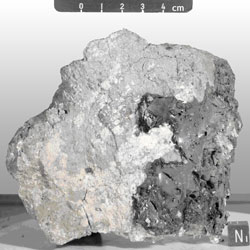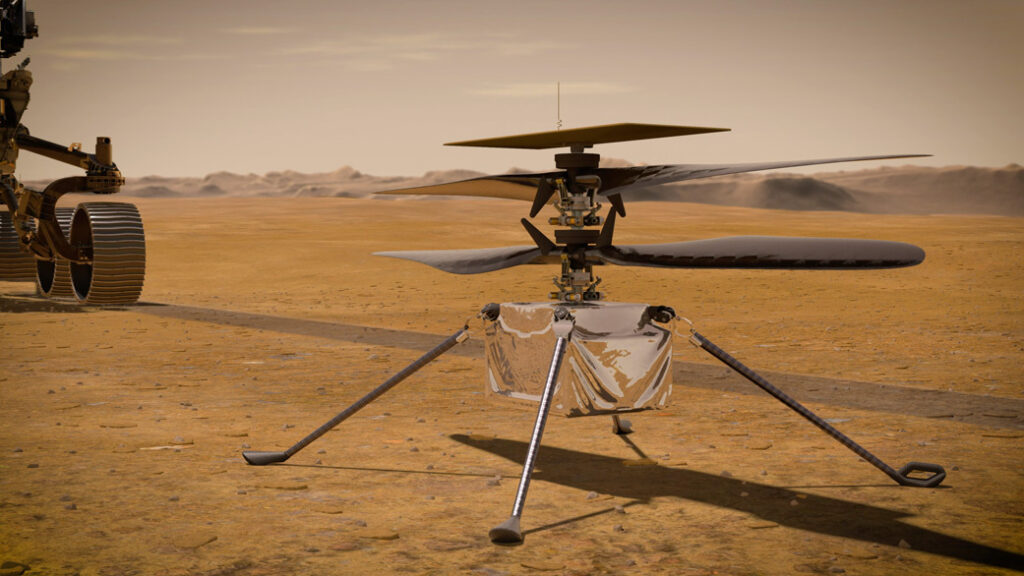With the Mars 2020 mission about to arrive at the red planet on February 18th, 2021 and begin its scientific studies, we had a chance to talk with Jake Robins from the WeMartians Podcast to learn about what he finds most fascinating about the project, how the project could affect future Mars missions, and some aspects of the mission that are flying under the radar. Jake is from Vancouver BC and is the producer and host of the WeMartians Podcast, which has Jake interview scientists, engineers, and science communicators in ways that engages the public to current Mars exploration.
CosmosPNW: What do you find the most fascinating about the project and rover?
Jake: “Mars 2020 is a pretty formidable robotic explorer on its own, but most fascinating to me is that it is part of a bigger, more important scientific objective – returning rock samples from Mars back to Earth. It is the first of three missions as part of NASA’s Mars Sample Return project. Getting samples back from Mars has been rated one of the most important science objectives by the science community for decades and it would quite literally rewrite planetary science. In the 1960s, Apollo astronauts returned lunar samples that we are still studying today because they are so valuable. Doing this again from Mars will unlock so many mysteries about how our solar system works, which is really exciting.”
CosmosPNW Insight: The insights gained from the lunar samples helped humanity discover some 3 minerals, and helped science learn more about the evolution of the Moon and the solar system. By gathering and returning samples from the Martian surface, this can help us understand how the planet has evolved over time, and how the planet formed.

CosmosPNW: How do you seeing Mars Perseverance affecting future Mars missions, in regards to how humans view the planet and how future missions are conducted?
Jake: “From a science perspective, Mars 2020 is poised to do some pretty serious astrobiology – looking for signs of life. It’s the most direct mission to look for life since the Viking landers in the 1980s. Depending on what it finds, it could direct us on a few different paths in our quest for life outside of Earth, which is pretty important. The same goes for samples – the information we get back from them will direct almost all the science of the subsequent missions to Mars and maybe even the Moon too.
Technologically, Perseverance is going to really break ground in its demonstration of flight on Mars. Accompanying it is the Ingenuity drone, or the Mars Helicopter. This little tech demo will make a few flights around the rover, taking pictures and showing how flying on Mars is possible. If it works and works well, I expect us to see more flight-based missions to Mars. I’m especially excited about the possibility of rovers and aerial vehicles working together, with the flying vehicles acting as scouts and to provide large scale geologic context to study regions. Flying vehicles fill the scale gap between seeing something from orbit and seeing it right up close on a rover.”

CosmosPNW Insight: Finding life would change how some view the Voyager lander missions, but more importantly fundamentally change how we view life outside of Earth. If life is not found on Mars, then one could assume that there was no trace life behind or that life never existed on Mars. However, if traces of life are found, it can change and enrich our understanding on how life can evolve on exoplanets and could affect human culture greatly. Knowing that there once was life on other planets that went extinct, and that other planets could harbor life would change how people view the cosmos. Maybe it would spur more interest in exoplanets or other areas of astrobiology, but it would definitely change how future missions to Mars and other celestial bodies would be handled.
The use of an aerial vehicle on another planet could prove beneficial both from a scientific perspective as well as a mission support perspective. From a purely scientific perspective, helicopters like the Ingenuity Drone are fully autonomous platforms that carry a plethora of scientific payloads. The benefit of a purely scientific mission using helicopters and aerial vehicles would be that these machines are able to focus their instruments on specific areas of a celestial body to potentially allow for more detailed and extensive research on that specific area of the celestial body. There is the added benefit of helicopters being able to study terrain that would be unsuitable for a rover to access, due to factors such as terrain. Another use for helicopters would be to provide support for manned missions and act in a fashion that modern drones do today, such as being robotic scouts and survey the terrain to help guide colonists.
There are definitely some challenges to engineering helicopters for use in planetary exploration, but to use helicopters effectively, the autonomous flying and operation of the instruments will need to be developed. In addition to mastering autonomous flying and instrumentation, designers of said helicopters need to make sure that the design of the helicopter allows for the machine to actually fly. A helicopter can serve as a nice middle ground between an orbiter and rover in the right roles, but some challenges do lie ahead.
CosmosPNW: Is there anything about the mission that you feel should be getting more attention about the Rover or project as a whole?
Jake: “I’m a podcaster and appreciate audio. There have been many attempts to get a microphone on the surface of Mars but all have failed. Perseverance has two. One is on the outside of the vehicle to record the sounds of entry, when the rover comes from space, enters the atmosphere, and executes the complex operation of landing on the surface. The second is on one of the instruments, which will enable us to hear Mars for the very first time. The wind around it, dust devils, and the whirring noises of the robot gears turning as the vehicle operates. We’re going to get a whole new perspective on Mars which is really exciting.”
CosmosPNW Insight: It cannot be overstated how important audio is to entertainment and life around us. People have been listening to radios for at least 100 years, and having great sound can make or break a viewing experience. This video of the space shuttle for example is really breathtaking as it has the rocket audio in the video.
Whether it be on walks, runs, or during a commute or trip, listening to podcasts has become mainstream as everyone has their own favorites. To highlight how important sound is to the human experience, the category of ASMR has become the 3rd highest search terms for Youtube in April 2020. Having sound from the landings and from the surface of Mars would provide great scientific and entertainment value. The scientific value of these sounds can help NASA understand the rocks of the planet during landing and more! One can just imagine a Youtube video of Mars ASMR getting millions of hits, or the next big Mars Hollywood blockbuster incorporating the sounds to make an ultra realistic movie experience.
Thanks again to Jake Martin for taking the time to answer our questions and regale us with his knowledge. Be sure to check out the WeMartian Podcast for more great information on Mars!
Make sure to check out the currently operational Mars missions already at the planet, and the other Mars missions launched in 2020.
Stay tuned to more Mars news as CosmosPNW as we will be closely following the new sciences and happenings on the red planet!

Great post. I found what I was looking for. Do you mind if I post this on my website and give you credit? If not, it’s ok.
Hey, thank you so much! Please feel free to share this, please provide credit where do!
Do you care if I post part of this on my webpage if I post a link back to this site?
To use content from CosmosPNW, please provide all applicable references to the content CosmosPNW has written and give proper credit.